Author: Juliet Tang, Investment Analyst at Huobi Ventures
Each bull market has a different ignition engine, and behind each bull market engine lies a long and arduous bear market development process. The frenzy of MEME, the summer of DeFi… With the development of Web3 technology and infrastructure, the social track has also ushered in new development opportunities.
Will the Web3 social track be the next bull market engine?
As a track that requires developers' imagination to be fully utilized at the application layer, social, identity, NFT, DAO, fans, and more can all be classified into the category of Web3 social. The social track is still in its early stages, and with the launch of Cyber tokens, Twitter's rebranding, and creator incentive programs, the market heat of the social track is gradually rising.
Social applications on the L2 chain BASE, such as Friend.Tech, quickly gained popularity after its launch on August 10th, with over 120,000 registered addresses and over 20,000 active addresses in less than 20 days since its launch.
Applications like CyberConnect and Lens Protocol have also attracted a large number of users and market attention.
This article explores the current development status of Web3 social, the characteristics of track products, and also analyzes several leading projects within the track. In addition, it also studies the risks and challenges faced by this track. Overall, the future of the Web3 social track looks promising, with good investment potential and development prospects in this sector.
This research report is produced by Huobi Ventures, the global investment arm of Huobi, integrating investment, incubation, and research to identify the world's most outstanding and promising projects.
Why focus on social
The crypto track has always been seen as an interdisciplinary science that combines computer science, finance, cryptography, mathematics, and more. However, due to its short existence, incomplete infrastructure, varying regulatory standards, and certain learning curves and costs, it has not yet achieved widespread popularity and use on a global scale. With the improvement of smart contract public chains represented by Ethereum, the development of on-chain Dapps has exploded since 2020. As shown in the figure below, the cumulative number of Defi user addresses has exceeded 40 million. Defi has led users to on-chain interactions, and its real and convenient application scenarios have driven the construction and development of on-chain economies, attracting and nurturing a group of on-chain "Degen". Since 2021, blockchain games and NFTs have led a new wave of users, and the new on-chain gameplay, the token economic design of the Ponzi effect, and the diverse value system have helped the Web3 field attract a large number of new users. In terms of blockchain games, due to their gold-making effect, they have attracted a large number of Web2 game players and low-income individuals from the third world. NFTs, on the other hand, due to their identity value, collectible value, and brand value, have attracted a large number of collectors, art enthusiasts, and traditional brand merchants.
Cumulative Defi user addresses across all chains
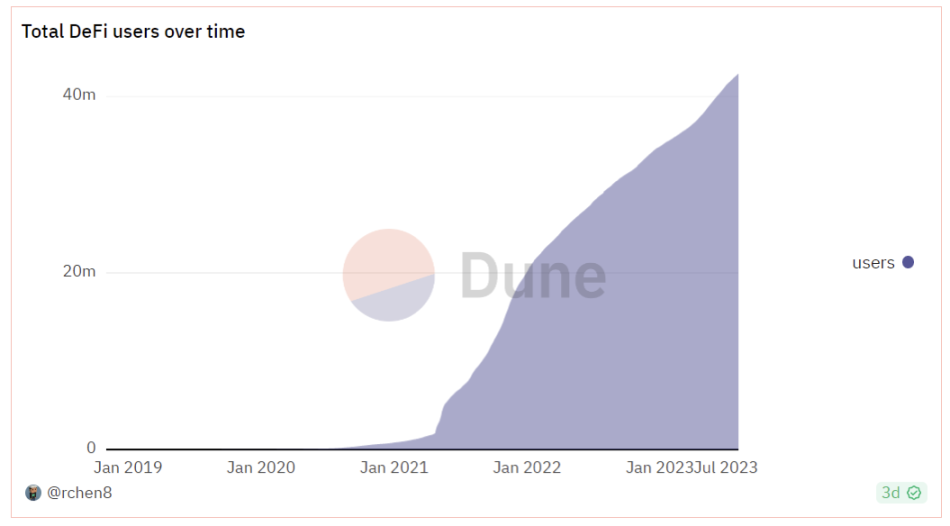
Source: https://dune.com/rchen8/defi-users-over-time
Since 2022, the market has entered a long bear market, and the heat of previously popular tracks such as games and NFTs has declined. In the case of insufficient incremental growth, the Ponzi economic model has rapidly collapsed, and the growth of Web3 users has reached a bottleneck. Currently, Web3 innovation is still ongoing, with developers continuously exploring new possibilities in various fields such as infrastructure, zero-knowledge proofs, payments, identity, and Defi 2.0. However, the small number of users is still one of the core problems facing the development of the Web3 field. In today's bear market, a large number of ecosystems and their projects are facing the dilemma of having completed construction but lacking real users. Excluding various airdrop studios and multi-wallet users, the actual number of on-chain users may not be optimistic.
From the supply side, the current development of Web3 needs to expand more application scenarios and create more ways to attract new users. Currently, it seems that the social track is likely to become the next explosive track for Web3 users. From the demand side, the social track has already proven its super potential in the traditional Internet field, with a huge user base and commercial value fully realized in this track. From the early days of MSN, to the middle period of Facebook, Instagram, and later Tiktok, each iteration of the social track has accompanied the birth of Internet giants and has spurred a large number of upstream and downstream job opportunities in the industry. As people's awareness of the privacy value and commercial value of data ownership increases, more and more voices are calling for users to control their own social information and data through Web3, allowing users to enjoy the value of their own identity and behavioral data. Therefore, the exploration of social projects within the Web3 field is one of the most promising and commercially valuable topics in the near future.
With the maturity of ecosystems such as Cyber Connect and Lens Protocol, the entire social sector ecosystem is becoming more and more magnificent. The entire social sector is in the early stages of an explosion, and some social projects have recently attracted market attention. For example, the crypto industry's largest KOL, Elon Musk, took over Twitter, and his behavior of repeatedly promoting Dogecoin and including Bitcoin in Tesla's official documents has brought global traffic to the crypto field. Although he has stated that Twitter will never issue tokens, speculation about social identity, token rewards, and payments around Twitter has long been discussed in the market. In addition, Lens Protocol completed a $15 million financing, and Internet social giants such as Instagram issued NFTs, and Cyber tokens were simultaneously listed on multiple leading exchanges, expanding the industry's development.
Characteristics of the social track
For Web3 social, there is currently no unified definition. We can classify all products involving the publication, exchange, and user characterization of information between people into the social field. From the current development achievements, it mainly includes social public chains, social graphs, social identities, various types of social applications, service tools, and more.
In the Web2 field, traditional social platforms such as Twitter, Instagram, Tiktok, etc., already have a large number of users and have spawned mature and rich business models. When we mention Web3 social, it is necessary to verify the necessity and feasibility of the development of Web3 social. Compared to Web2, Web3 has a small user base in social development, and is currently in the exploration stage of technology. In general, this article believes that the key factors for the development of Web3 social include:
1. Anonymity and resistance to censorship
One of the biggest advantages of Web3 social compared to Web2 social is its anonymity and resistance to censorship, a feature that has already been verified as a user demand. In the Web2 field, data is held by centralized institutions, and users may be subject to arbitrary scrutiny of their data, forced deletion and modification of their social speech, etc. Essentially, Web2 social is still a social model under a regulatory system, where users cannot protect their privacy. In contrast, decentralized Web3 naturally has the characteristics of protecting user privacy and resisting centralized institutional scrutiny, meeting the demands of users to protect their privacy and maintain their own security.
2. User data ownership
In the social model of Web2, user data ownership belongs to centralized platform institutions. By holding user data, platforms can create user profiles, analyze user behavior preferences, and then deliver corresponding advertisements and products to maximize traffic monetization. At the same time, the data itself also has certain commercial analysis value. In the Web3 field, allowing users to own their data can enable users to obtain the commercial value of data traffic. From the user's perspective, projects that make it easy for users to realize the value of their data have a certain appeal. In fact, this model has already been attempted in the business model of Web2, and has achieved certain results. For example, Pinduoduo provides cash rewards for watching videos, and cash rewards for inviting friends to participate in "slash one" (essentially a social network to attract new users). Currently, there have been many attempts in the Web3 field in this area, such as Nostra based on the Bitcoin Lightning Network, Lens based on Polygon, and multi-chain protocol CyberConnect, all attempting to return data ownership to users. This article believes that in Web3, due to the diversity of tokens, the volatility of token values, and the richness of token economic design, the commercial value realization of data ownership in Web3 can generate many interesting gameplay methods that are even more attractive to users than the wealth creation and user attraction effects created in the previous round of blockchain game bull markets.
3. Simplicity and ease of use
One of the elements of social projects is to achieve abundant and free flow of information within the community, which depends on a large number of users. How to introduce a large number of users is the biggest challenge and opportunity for Web3 social projects. One of the important reasons for the limited development of the crypto field is the small user base. Firstly, there is a certain learning curve for users to enter the crypto field, as users need to have a certain level of computer and encryption knowledge to participate in on-chain interactions. Secondly, compared to user tools in Web2, current crypto projects are more complex and less simple and convenient to use. Taking an EOA wallet as an example, the complex mnemonic and storage methods, potential phishing and private key theft risks, software update iterations, and compatibility issues between software all affect the user experience. Blocking a large number of Web2 users from entering the crypto world also means that once the problem of learning costs and entry barriers is solved, the birth of a social project that is easy to use and allows users to operate without feeling it will bring huge user traffic.
4. Composability
In Web2 social, due to the existence of various centralized institutions, a huge data island has actually been formed. The huge data islands formed by the Internet giants have data access permissions and pricing power, and other projects in different categories need to obtain permission from the data ownership institutions to use the data or build applications on them. At the same time, there are compatibility issues and potential competitive relationships between the various huge data islands, and as a result, many Web2 applications are not interconnected, and users often have to register new accounts and re-accumulate information and data when using a new platform. This article believes that ideal Web3 social products may have the opportunity to solve the problem of data islands. Similar to the portrayal of user profiles by projects such as POAP and ENS, it can be seen as an attempt to solve the problem of data islands. In the future, there may be more simple and barrier-free standard protocols that help users easily control data ownership while being compatible with most protocols. This area is one of the key exploration directions for DID.
Overview of leading projects
According to different project types, social projects mainly include social graphs, social applications, and tool projects.
Social graphs play a role as infrastructure in Web3 social, providing common standards and data information sources for other application projects. Social graphs should have rich data sources, extensive composability, and low usage barriers. From this perspective, the necessity of independently building new public chain social projects or native social projects on niche public chains is not significant, as it adds isolation from other mature ecosystems. Currently, the mainstream choice for the development of social graphs is to build general standards for social identities on mature chains, including projects such as Lens Protocol, CyberConnect, and RSS3 within this track.
CyberConnect
CyberConnect is a multi-chain social graph that can verify and store user interaction data, providing users with personal profiles, social graphs, and smart contract wallets. It also offers standard API data interfaces for other Dapp developers, enabling user data migration across multiple Dapps. Currently, CyberConnect has integrated with Polygon, Linea, and Optimism, and is expected to integrate with networks such as Arbitrum in the future. As of August 8, 2023, the total number of accounts reached 368,000, with a total of 738,000 user operations, and over 1.25 million user profiles, as shown in the image below.
- CyberConnect User Data

Source: https://dune.com/cyberconnecthq/cyberaccount-cyberconnects-4337-smart-account
Despite the current sluggish market conditions, CyberConnect's daily average traffic DAU remains above 10,000, indicating significant overall traffic.
- CyberConnect Traffic Data
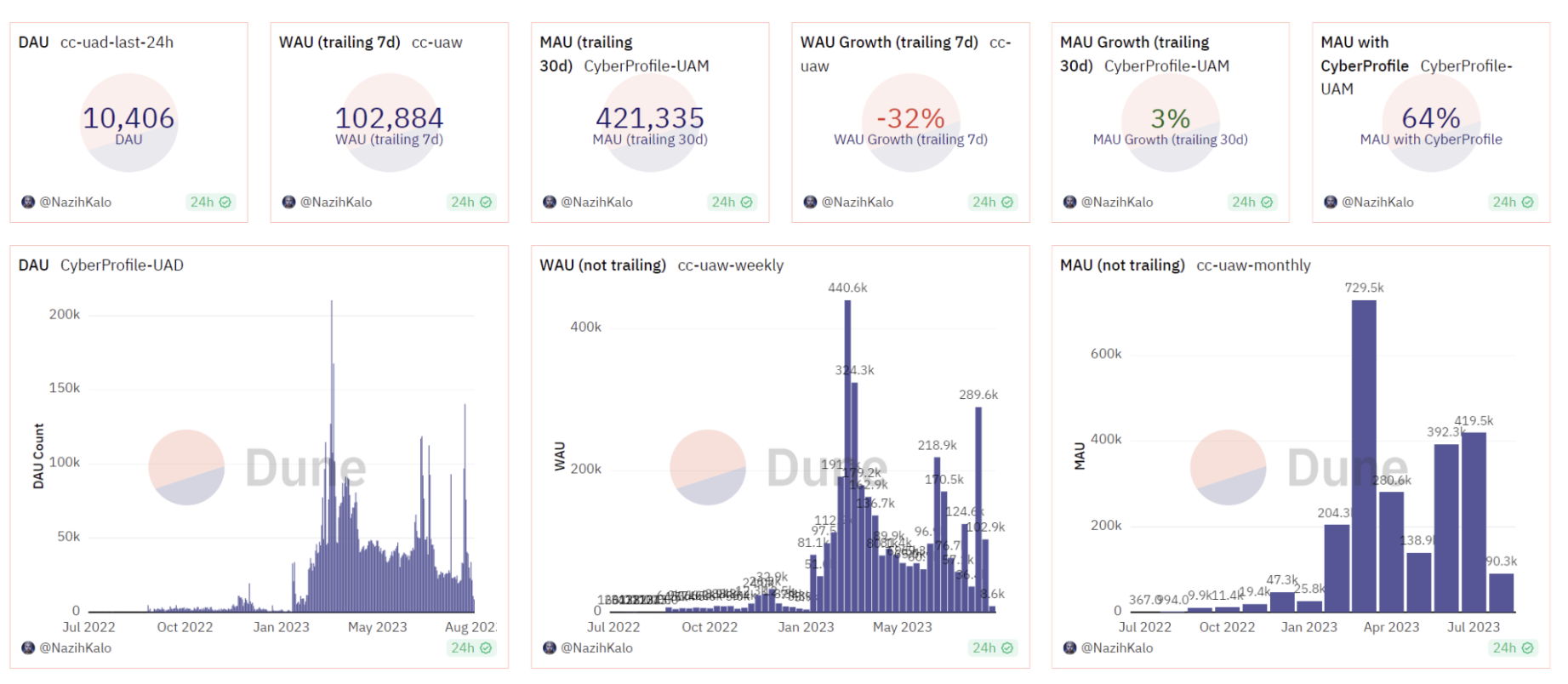
Source: https://dune.com/cyberconnecthq/cyberconnect-link3-metrics
Lens Protocol
Lens Protocol is a social graph protocol developed by the well-known DeFi lending project AAVE team, built on Polygon. It allows anyone to create non-custodial social profiles and build new social Dapps. Users can create their own social profile NFTs through wallet integration and interact with other users. They can also build interactive Dapps on the Lens platform, where interactions are recorded on the Lens social profile. The image below shows some projects within the Lens ecosystem, with over 100 projects built on the Lens ecosystem, including various social, gaming, media sharing, DAO tools, ad management, messaging, knowledge payment, and lottery Dapps. Although most ecosystem projects are still in the early to mid-stage of development, the overall richness in terms of quantity and types is very high, even surpassing some public chains. In general, the Lens-created on-chain social ecosystem is very friendly to creator economies.
- Lens Protocol Ecosystem Projects
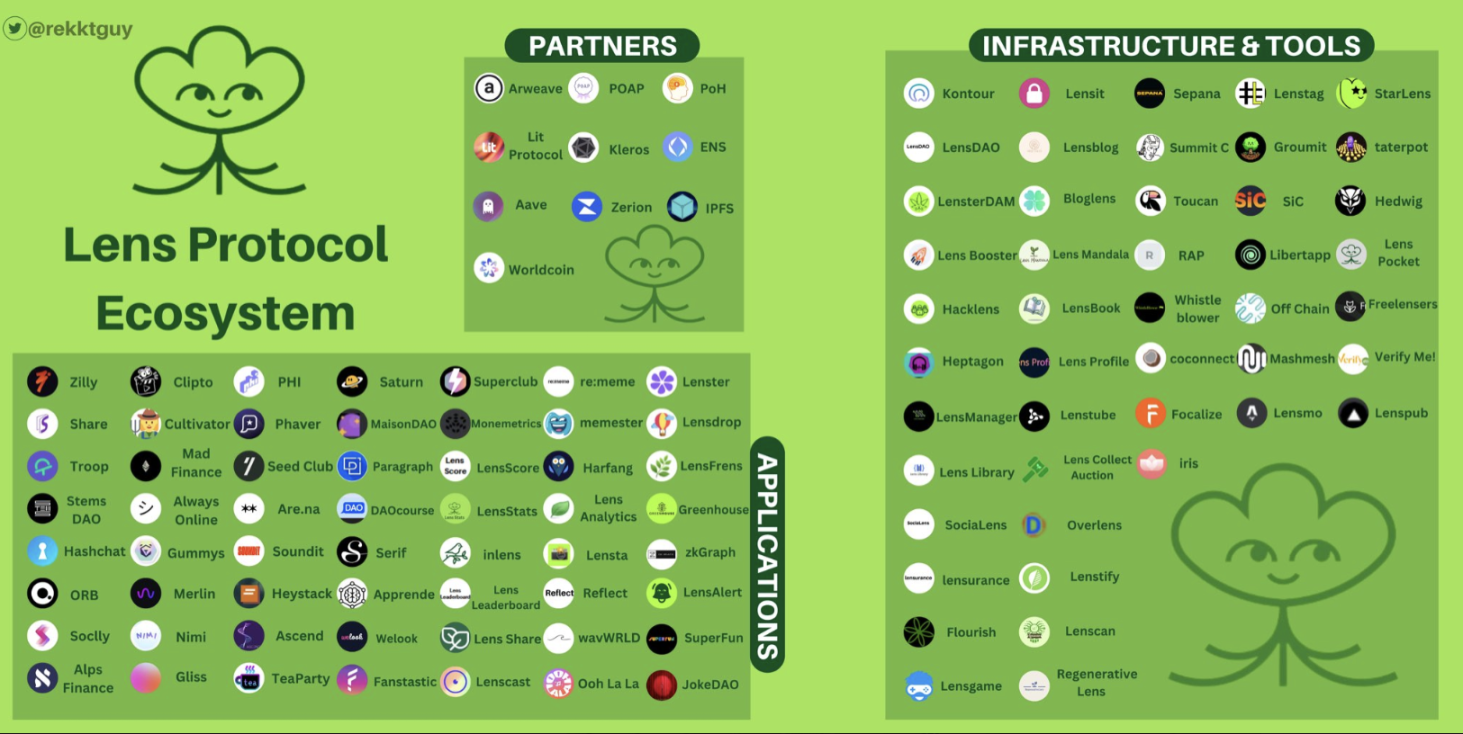
Source: https://twitter.com/rekktguy/status/1582288617229406209?s=20
As of July 2023, over 110,000 addresses have obtained profile social cards through Lens Protocol. The cumulative number of Lens Protocol users is over 360,000, with a total of 21.93 million transactions. The peak of transactions and user numbers occurred in February 2023, indicating significant participation from retail investors or airdrop studios. Currently, the daily on-chain transaction volume ranges from 15,000 to 20,000, with 3,000 to 5,000 wallet addresses participating in daily interactions. Despite the bearish market background, there is still a significant number of users participating in social track interactions, demonstrating good user data performance and growth potential in this track.
- Lens Protocol User Data
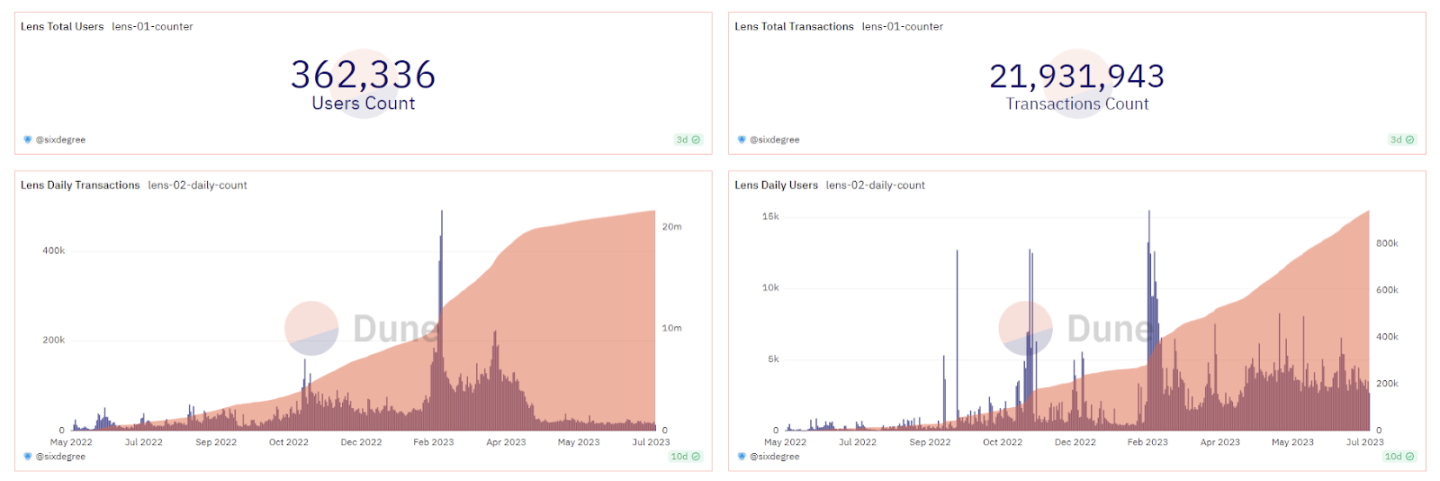
Source: https://dune.com/sixdegree/lens-protocol-ecosystem-analysis
In summary, social graphs serve as the infrastructure and common tools for the entire social track. A unified, simple, and convenient social graph is beneficial for reducing user usage barriers, reducing usage barriers between different Dapps, and accumulating more users and data. Comparatively, Lens Protocol is built on Polygon, focusing on creating its own social ecosystem, while CyberConnect does not have its own content platform and ecosystem. It supports multiple chains and interactions with multiple applications, and is actively exploring ways for Web2 users to enter through wallets, focusing on creating open social profiles. Both projects currently belong to the leading projects in the social track, and with further development and launch of Lens Protocol, the social track led by these two projects may enter a period of explosive growth.
Social Applications
Farcaster
Farcaster is a decentralized social platform created by Dan Romero, a former executive at Coinbase. It is built on Ethereum and is positioned as a competitor to Twitter. Currently in the beta testing phase, Farcaster generates and stores user identities on-chain and provides database Hub storage for other information off-chain, achieving a decentralized social interaction experience comparable to Web2 in terms of speed and low cost. Additionally, Farcaster allows users to use a self-hosted mode to send and receive messages without a gateway, ensuring decentralized implementation. Its ecosystem has also built nearly 20 derivative projects, including data analysis, image enhancement, hot topics, related topics, and search engines.
As of August 9, 2023, Farcaster's total wallet addresses have exceeded 13,000, including several prominent figures in the crypto industry. The user growth rate is 2.2% per week, with 2,500 dynamic posts in the past seven days, indicating a decent user base and activity level for an independent social application.
- Farcaster User Data Statistics
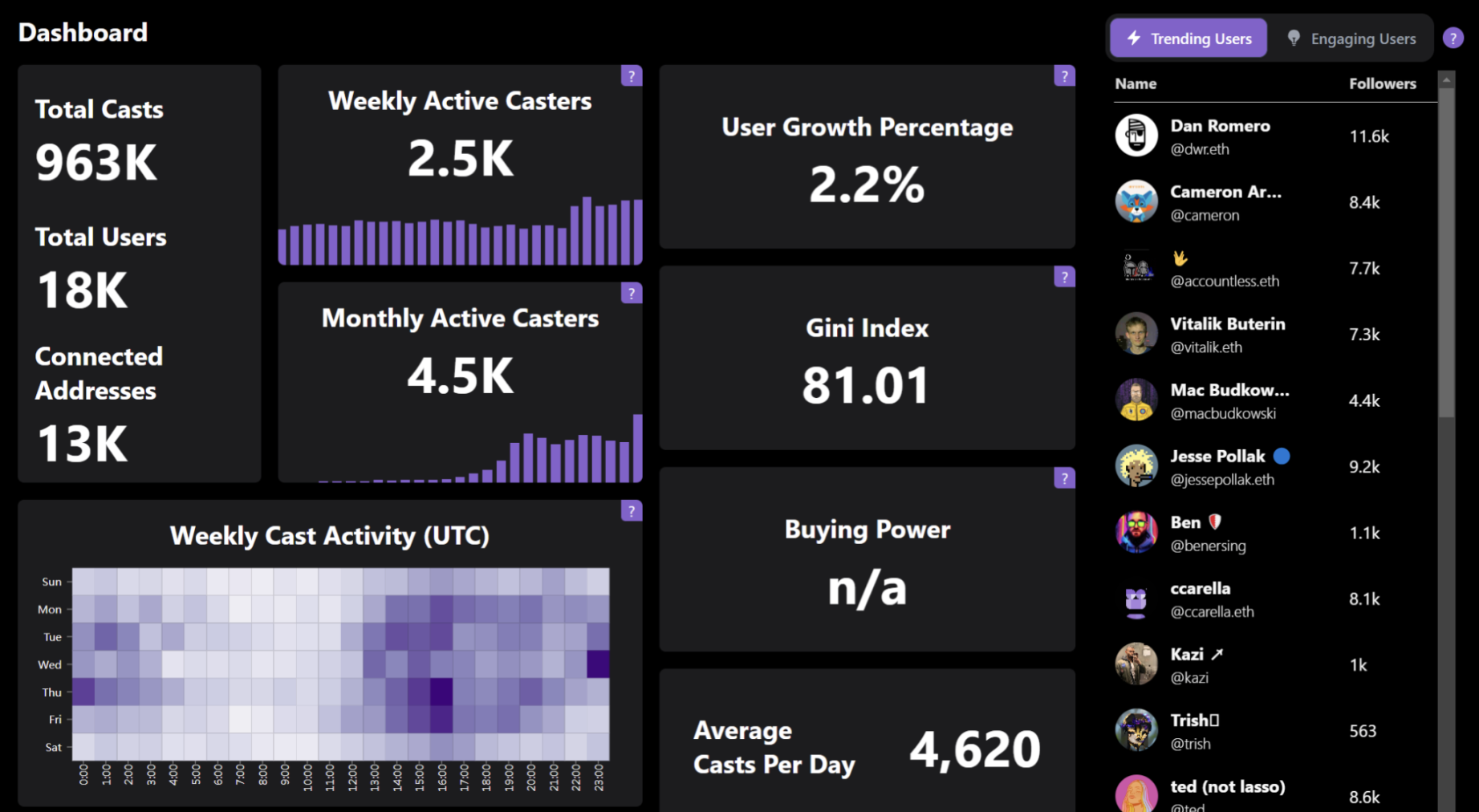
Source: https://farcaster.network/
Nostr
Nostr is a decentralized open-source social transmission protocol that allows developers to build Dapps on top of it. Nostr has no centralized servers and achieves information transmission through client and relay designs. Compared to Web2 social, this protocol achieves complete decentralization, resistance to censorship, and user privacy protection. Damus is a decentralized social product built on Nostr, offering a social platform similar to Twitter with decentralized, anonymous, and ad-free features. The product is still in the early stages of development and has received recommendations and support from Twitter's co-founder Jack Dorsey.
As a completely open, anonymous, and decentralized anti-censorship product, Damus has strong competitiveness in privacy and security compared to traditional social products, with a clear market and target customer base. However, attracting a wider range of Web2 users may require the emergence of new product designs and features.
Friend.Tech
Friend.Tech is a social application deployed on the L2 chain BASE, backed by Paradigm investments within the Coinbase ecosystem. Similar to traditional fan token/creator economy projects, the platform provides creators with fan communities and token issuance services. Since its launch on August 10th, the product has quickly gained popularity, with over 120,000 registered addresses and over 20,000 active addresses (users viewing profiles) in less than 20 days, as shown in the images below.
- Friend.Tech User Data
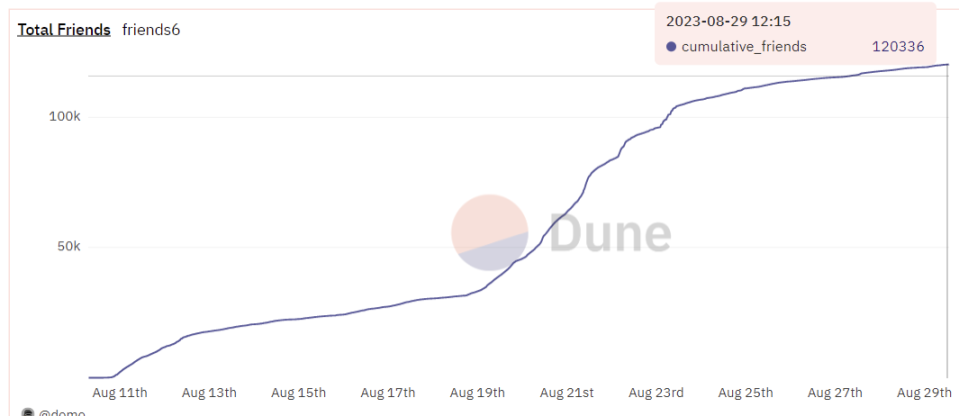
Source: https://dune.com/domo/friendtech
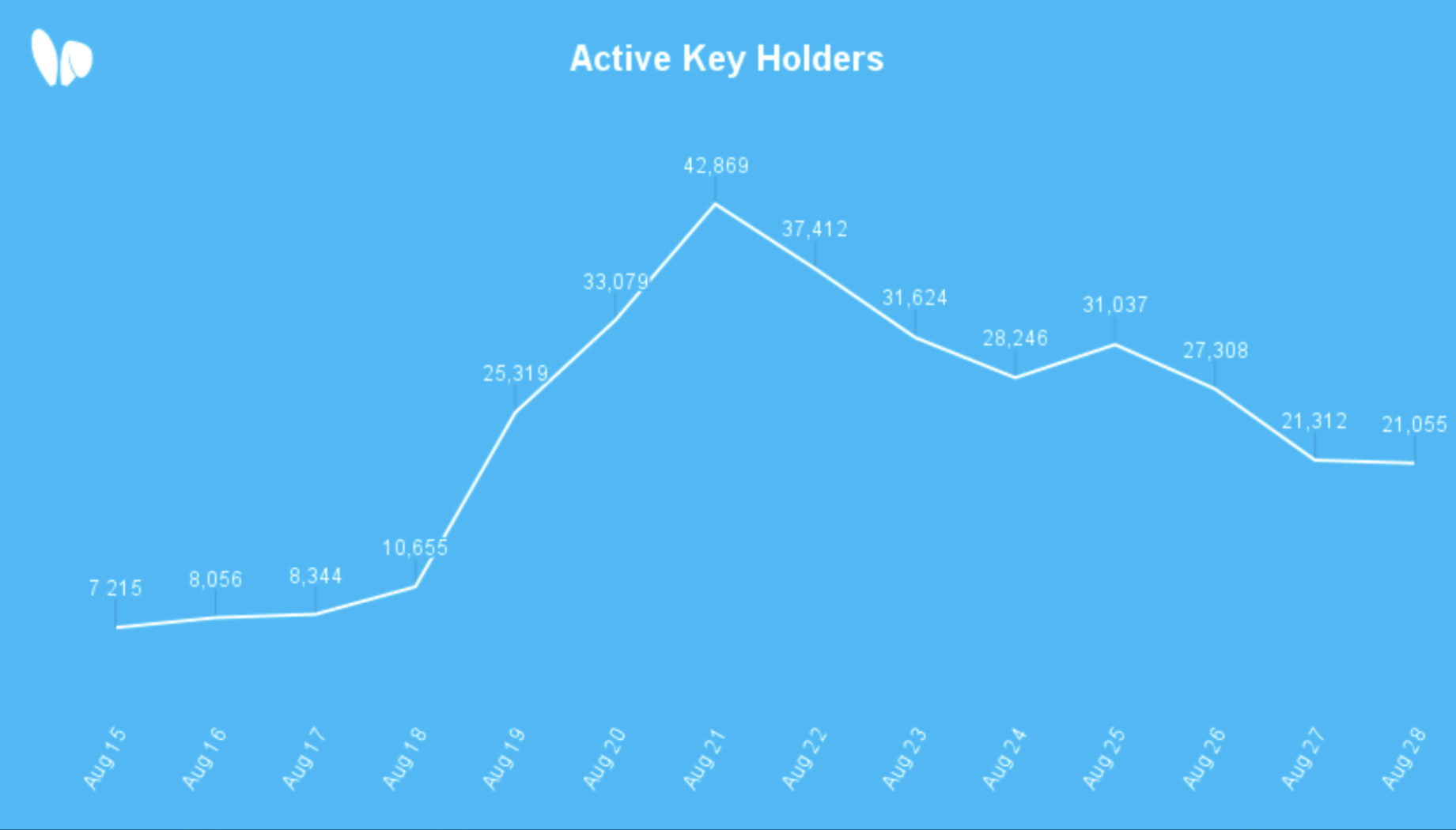
Source: https://twitter.com/friendtech/status/1696599323637846444/photo/1
The user needs to pay a 10% transaction fee for each transaction, with 5% going to the creator and 5% going to the protocol. As of August 28, 2023, the protocol has accumulated over $4 million in revenue, as shown in the image below.
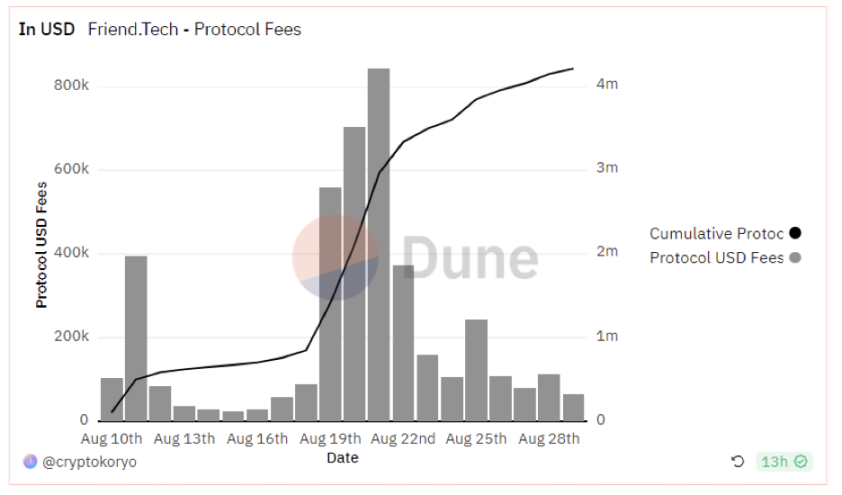
Source: https://dune.com/cryptokoryo/friendtech
The rapid popularity of the Friend.Tech product has to some extent sparked market attention and speculation about the social track. This article believes that, in terms of the product itself, Friend.Tech has not yet deviated from the design of traditional social products and token models. However, its success in this phase is traceable, mainly including the following points:
1. Ponzi Economics Design for Fan Tokens
Currently, fan token designs mainly have two modes: issuing fan tokens, where users meet the entry threshold for creator communities by holding a certain number of fan tokens, and fan NFT issuance, where users meet the entry threshold for creator communities by holding NFTs. In the case of Friend.Tech, the combination of the user invitation mechanism and fan token economics has disrupted the previously lackluster token economy mechanism. Friend.Tech has announced the distribution of 100 million points within six months, which is widely believed to be linked to token airdrops. This mechanism, combined with the user invitation mechanism, promotes user acquisition and encourages users to purchase shares of different creators to generate transaction fees and data. This strategy is similar to Blur's airdrop strategy, attracting users to use the product through long-term point incentives and airdrop expectations, increasing user stickiness and market share.
In terms of token economics design, based on Laurence Day's widely accepted calculation statistics for the price model, Friend.Tech's fan token price follows a price curve of P=suppy^2/16000, where price fluctuations will exhibit exponential levels of volatility. Early investors have the opportunity to enjoy huge profits, and this Ponzi economic design will continue to cause price surges until the buying and selling users reach equilibrium, attracting more speculative users to participate in token trading. This is one of the most important reasons for the project's short-term explosion, similar to the design in the Meme project XEN, which ignites market hotspots through Ponzi economic token design and early user dividend incentives.
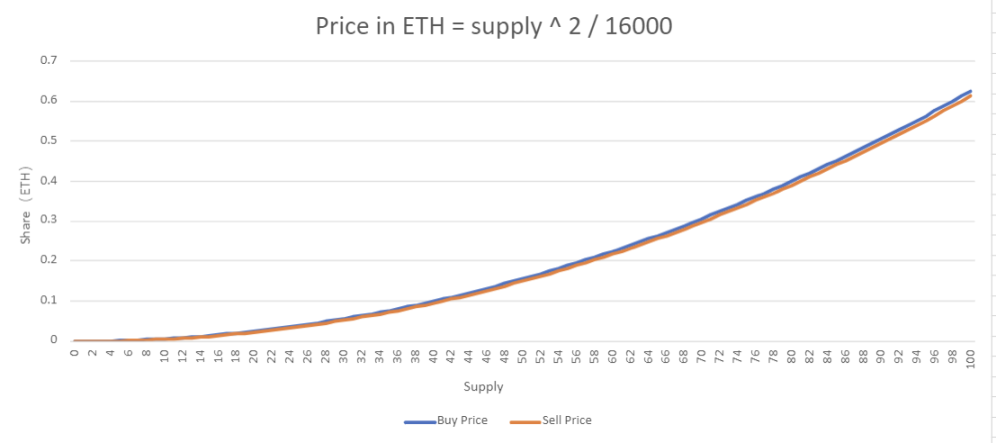
Source: https://onedrive.live.com/view.aspx?resid=C078415A103A3F40!1094&ithint=file%2cxlsx&authkey=!ANE0-sqb5hAftiI
2. Early Benefits of the BASE Chain Launch
Friend.Tech's recent launch and popularity on the BASE and L2 tracks are closely related. Since the launch of Arbitrum in early 2023, the overall performance of the L2 track in the bear market has been very impressive. The subsequent Zksync ecosystem, OP Stack, and BASE have all sparked market enthusiasm. It is expected that Starknet, Scroll, and Zksync will launch and issue tokens this year, along with the upcoming Cancun upgrade. The entire L2 track can be considered the most important and eye-catching track in the crypto industry in 2023, and BASE is also backed by Coinbase, a listed exchange in the crypto industry. Friend.Tech's choice to launch on BASE at an early stage cleverly captured the market's hotspots and timing benefits.
3. Endorsement by Top VC Paradigm
As a top investment fund in the crypto industry, Paradigm's endorsement naturally adds a lot of points to the project. Even with Friend.Tech's underdeveloped web interface, only a rough beta version, and a lack of various project whitepapers and explanatory materials, the market still trusts the project and invests a lot of enthusiasm, largely due to Paradigm's endorsement. At the same time, the point mechanism of the project shows a similar incentive design to Blur, possibly with the shadow of Paradigm's guidance.
In summary, while Friend.Tech's product mechanism is relatively traditional, its token economic design, customer acquisition strategy, and marketing tactics are bolder than traditional social projects. In the short term, Friend.Tech may replicate Blur's user growth path, but as a social product, the long-term realization of social attributes will need to be observed after the product is launched.
Tool Projects
Social tool projects mainly serve as service functions, most of which are currently positioned to serve projects and Dapps. Examples include Lenscan for browsing data under LensProtocol, LensDAO for organization and community management, Alertcaster for information alerts in the Farcaster ecosystem, and FarQuest for conducting surveys. Various general auxiliary tools for social promotion, DAO treasury governance, NFT design, account management, and wallet management can also be categorized as social tools.
In general, the social track is a field that fully unleashes developers' imagination at the application layer. In addition to social graphs and application tools, a wide variety of social platforms, fan platforms, and media platforms are emerging in social applications. This track is still in its very early stages, and the enthusiasm and efforts of developers and investors will continue to help this track accumulate results.
Risks and Challenges
The current crypto social track has attracted the participation of many developers and capital. While recognizing the opportunities, we should also be aware of the risks and challenges facing this track. The current issues mainly lie in technology, user growth, and compliance.
Technical Challenges
Social products are generally at the application layer and their development depends on the maturity of infrastructure and technology. As the user base grows, social products will face higher demands. The development of social applications depends on solving issues such as data storage, cross-chain information transmission, information transmission costs, and network congestion. The current infrastructure does not yet meet the requirements for the emergence of large-scale user social software at the level of Web2.
User Growth
In addition to anonymity and resistance to censorship, why would Web2 users be willing to switch to Web3 social applications? It is clear that not every user has extremely high privacy requirements, and many users can still meet their social needs on existing centralized social platforms. Excluding these users, how to attract more users, or whether the target users are only focused on users with privacy needs? If economic incentives are considered to motivate users, how to design an economic model while avoiding falling into an economic closed loop or Ponzi economic dilemma? At the user level, Web3 social has gained good market popularity and traffic, but the current popularity still remains within the crypto community. The question of whether to solve the problems of existing social products or create new features and demands is a key issue that Web3 social products need to address to increase user numbers.
Compliance
The selling points of Web3 social products, including decentralization, resistance to censorship, privacy protection, user data ownership, and the ability for users to benefit from data ownership, may also become risk points. It is foreseeable that the characteristics of Web3 products are highly likely to attract participants from the black and gray industries, as well as attract the attention of regulatory agencies. With the maturity of the Web3 track and the expansion of the user base, issues such as developer security and potential regulatory inquiries need to be considered in advance.
Conclusion
The Web3 social track is in its early development stage and relies on the maturity of other infrastructure construction, including but not limited to cross-chain information transmission, data storage, reduced transaction costs, and compliance issues. Currently, social track products mainly include social graphs, social tools, and social applications, with social graphs being the most foundational and social applications being the most numerous and diverse in terms of categories. There are a large number of developers experimenting with the development of Web3 social products, and capital is gradually paying attention to and investing in this track. Events such as the launch of the Cyber token, Twitter's rebranding, and creator incentive programs all demonstrate the increasing market enthusiasm for the social track. While the social track presents opportunities, it is also important to fully recognize the challenges it currently faces, including the incomplete development of infrastructure technology, bottlenecks in new user growth, and potential compliance issues. In general, this article believes that the Web3 social track shows good prospects in terms of development prospects, trends, and market enthusiasm. With the improvement of infrastructure, project development, capital aggregation, and token listing, this sector is believed to have good investment potential and development prospects.
References
Web3 Social: Road to Mass Adoption (binance.com)
https://messari.io/report/web3-social-usage-and-engagement
https://mpost.io/web3-fundraising-report-for-q2-2023-trends-in-gaming-and-social-network/
同源异流:Lens 和 CyberConnect 的去中心化社交路径 — Biteye (mirror.xyz)谁能成为爆款?
一文盘点 Web3 社交赛道热门项目 – Web3Caff
https://medium.com/@Cobo_Global/socialfi-fdb821e1e7da
免责声明:本文章仅代表作者个人观点,不代表本平台的立场和观点。本文章仅供信息分享,不构成对任何人的任何投资建议。用户与作者之间的任何争议,与本平台无关。如网页中刊载的文章或图片涉及侵权,请提供相关的权利证明和身份证明发送邮件到support@aicoin.com,本平台相关工作人员将会进行核查。




